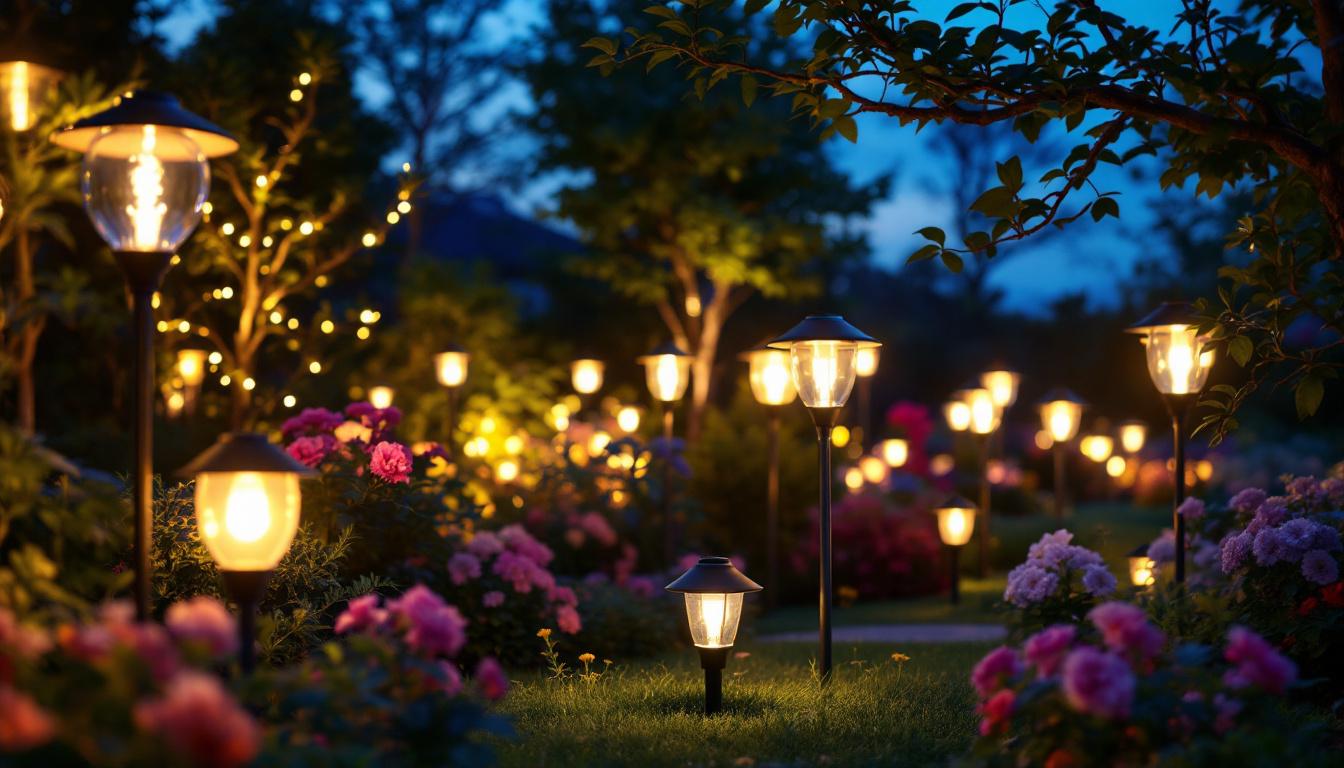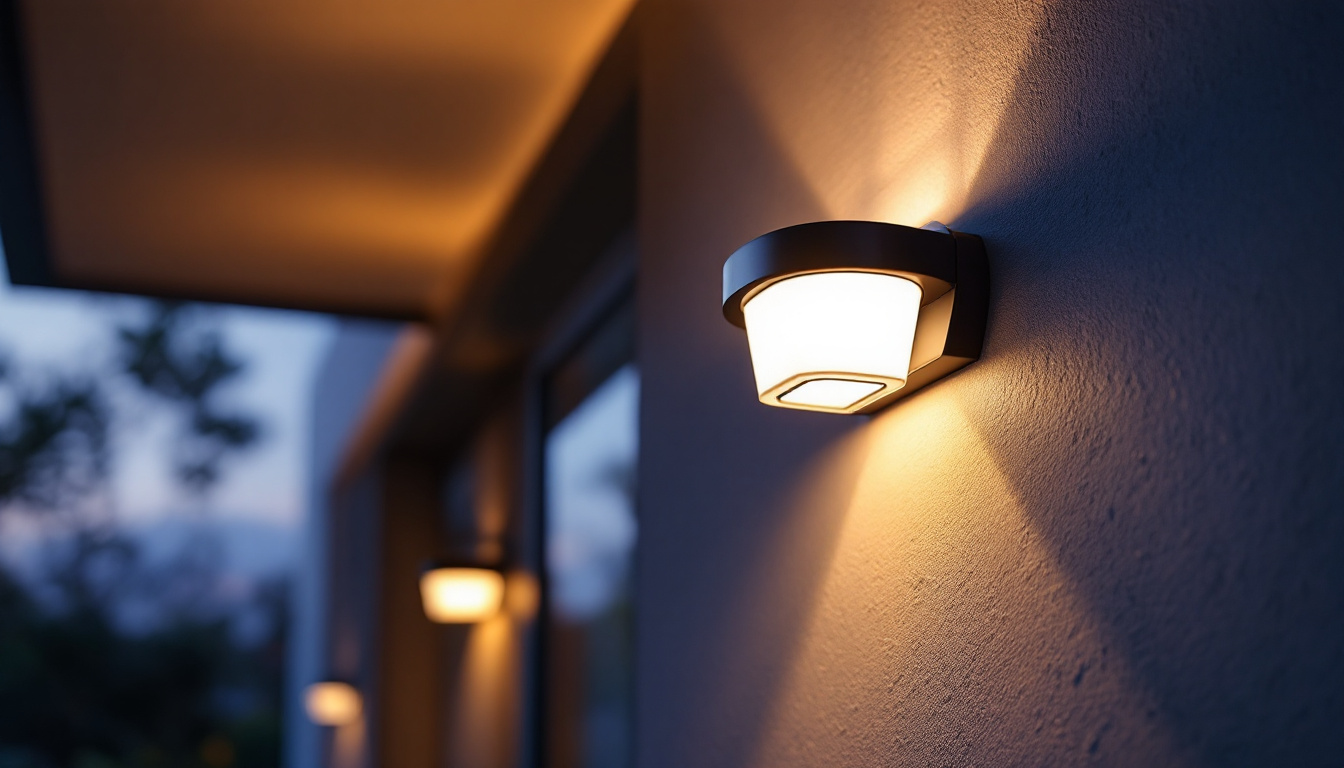
As the demand for sustainable and energy-efficient lighting solutions grows, large solar powered garden lights have become increasingly popular in both residential and commercial outdoor settings. For lighting contractors, understanding the nuances of these systems is essential to meet client expectations, ensure proper installation, and optimize performance.
Large solar garden lights offer a unique combination of environmental benefits, cost savings, and aesthetic appeal. However, their size and power requirements introduce complexities that differ significantly from smaller solar fixtures. This article provides a comprehensive overview of what lighting contractors need to know when working with large solar powered garden lights, from design considerations to installation best practices.
One of the key advantages of large solar powered garden lights is their ability to illuminate expansive outdoor areas without the need for extensive wiring or reliance on traditional power sources. These lights are equipped with high-capacity solar panels and advanced battery systems that allow them to store energy efficiently during the day, providing bright and reliable lighting at night. This not only reduces electricity costs but also minimizes the carbon footprint associated with outdoor lighting. Furthermore, many of these lights come with smart technology features, such as motion sensors and dimming capabilities, which enhance their functionality and adaptability to various outdoor environments.
When considering the installation of large solar powered garden lights, contractors must also take into account the specific site conditions, such as the amount of sunlight available and the geographical location. Proper placement is crucial to maximize solar energy absorption, which may involve conducting a shade analysis to identify potential obstructions like trees or buildings. Additionally, the structural integrity and design of the lights should align with the aesthetic goals of the landscape, ensuring that they complement the surrounding environment while providing effective illumination. By focusing on these critical factors, contractors can ensure that the solar lights not only perform optimally but also enhance the overall beauty and functionality of outdoor spaces.
At the heart of any solar-powered lighting system is the solar panel, responsible for capturing sunlight and converting it into electrical energy. Large solar garden lights typically utilize high-efficiency monocrystalline or polycrystalline panels, which offer superior energy conversion rates compared to standard panels used in smaller fixtures.
For contractors, it’s crucial to assess the panel’s wattage and size relative to the light’s power consumption. Larger lights require more energy, demanding panels with higher output capabilities. Additionally, panel placement should maximize sun exposure, ideally facing south in the northern hemisphere and north in the southern hemisphere, with minimal shading throughout the day. This strategic positioning not only enhances energy capture but also prolongs the lifespan of the solar panels by reducing wear from fluctuating temperatures and moisture accumulation.
Moreover, advancements in solar technology have introduced bifacial solar panels, which can capture sunlight from both sides. This innovation allows for increased energy generation, especially in environments where light is reflected off surfaces like water or concrete. As the demand for sustainable energy solutions grows, understanding these technologies becomes essential for contractors looking to provide efficient and eco-friendly lighting options.
Energy captured by the solar panel is stored in rechargeable batteries, which power the light during nighttime hours. Large solar garden lights often incorporate deep-cycle lithium-ion or sealed lead-acid batteries, selected for their capacity and longevity.
Battery capacity must be carefully matched to the light’s power draw and expected runtime. For example, a high-lumen LED fixture requiring 20 watts for 8 hours would need a battery capable of storing at least 160 watt-hours, plus a margin to account for inefficiencies and cloudy days. Lighting contractors should verify battery specifications and consider environmental factors such as temperature, which can affect battery performance. In colder climates, for instance, battery efficiency can drop significantly, necessitating a larger capacity to ensure reliable operation throughout the night.
Furthermore, the integration of smart battery management systems (BMS) can optimize charging cycles and enhance battery life. These systems monitor battery health and performance, providing data that can help contractors make informed decisions about maintenance and replacement, ultimately leading to more sustainable project outcomes.
LEDs are the preferred light source for solar garden lights due to their energy efficiency, long lifespan, and versatility in color temperature and brightness. Large solar garden lights typically use multiple high-power LEDs to achieve the desired illumination levels, often ranging from 1,000 to 5,000 lumens or more.
Contractors should evaluate the LED specifications, including luminous efficacy (lumens per watt), color rendering index (CRI), and beam angle, to ensure the lighting meets the aesthetic and functional requirements of the project. Additionally, integrated smart controls such as dimming and motion sensors can enhance energy savings and user experience. These features not only contribute to reduced energy consumption but also allow for customizable lighting solutions that can adapt to varying environmental conditions and user preferences.
Moreover, the development of tunable white LEDs has opened new avenues for creating dynamic lighting environments. By adjusting the color temperature throughout the evening, these LEDs can mimic natural light patterns, promoting safety and comfort in outdoor spaces. This flexibility is particularly valuable for public parks and commercial properties, where ambiance plays a critical role in user satisfaction and engagement.
Before installation, a thorough site assessment is imperative. Lighting contractors must evaluate the garden’s layout, potential shading from trees, buildings, or other structures, and the orientation of the solar panels. Poor solar access is a common cause of underperformance in solar lighting systems.
Tools such as solar pathfinders or smartphone apps that simulate sun paths can assist in determining optimal panel placement. In some cases, relocating the solar panel away from the light fixture via wiring can maximize sun exposure without compromising design aesthetics.
Large solar garden lights are often heavier and bulkier than standard fixtures, necessitating robust mounting solutions. Contractors should ensure that poles, bases, or brackets can withstand environmental stresses such as wind, rain, and potential vandalism.
Anchoring methods vary depending on the surface—concrete, soil, decking—and the fixture’s design. For example, ground spikes may suffice for soft soil, while concrete footings are recommended for permanent installations. Proper grounding and corrosion-resistant materials are also critical for long-term durability.
While solar garden lights are generally low-voltage systems, proper wiring practices remain essential. Contractors should use weatherproof connectors and cables rated for outdoor use to prevent moisture ingress and electrical faults.
In some installations, especially those integrating multiple lights or hybrid systems with grid backup, compliance with local electrical codes and standards is mandatory. Ensuring that all components are correctly rated and installed reduces liability and enhances system reliability.
Solar panels and light fixtures require periodic cleaning to remove dust, dirt, leaves, and bird droppings that can obstruct sunlight and reduce efficiency. Lighting contractors should advise clients on maintenance schedules, typically recommending cleaning every few months or after significant weather events.
Inspections should also include checking for physical damage, loose connections, and battery health. Early detection of issues can prevent system failures and extend the lifespan of the installation.
Batteries are the most common component requiring replacement in solar lighting systems. Lithium-ion batteries generally last longer and perform better in varied temperatures than lead-acid types but come at a higher initial cost.
Contractors should educate clients on expected battery lifespans—usually between 3 to 5 years—and provide options for eco-friendly disposal or recycling. Monitoring battery voltage and capacity during routine maintenance can help predict end-of-life and plan timely replacements.
Common problems with large solar garden lights include dimming or flickering lights, failure to turn on at dusk, and shortened runtime. These symptoms often point to battery degradation, insufficient solar charging due to shading or panel damage, or faulty LED drivers.
Using diagnostic tools such as multimeters and solar charge controllers with built-in monitoring can assist contractors in pinpointing faults quickly. Offering maintenance contracts or service agreements can also provide ongoing support and client satisfaction.
Large solar garden lights contribute significantly to reducing carbon footprints by harnessing renewable energy and eliminating the need for grid electricity. This aligns with increasing regulatory and consumer demands for green building practices.
From an economic perspective, these lights reduce operational costs by eliminating electricity bills and minimizing wiring infrastructure. Over time, the return on investment can be substantial, especially in remote or off-grid locations.
Despite their benefits, large solar garden lights present challenges that contractors must address. Initial costs are higher than traditional lighting, and performance can be affected by geographic location, weather variability, and installation quality.
Additionally, the larger size of these fixtures may not suit all landscape designs, requiring careful integration to maintain aesthetic harmony. Contractors must balance technical specifications with client preferences and site constraints to deliver optimal solutions.
Ongoing research is driving improvements in solar panel efficiency, with emerging technologies such as bifacial panels and perovskite cells promising higher energy yields in smaller footprints. Similarly, battery advancements focusing on solid-state and enhanced lithium chemistries aim to increase capacity, safety, and lifespan.
Lighting contractors should stay informed about these developments to recommend cutting-edge products that offer superior performance and value.
Integration of smart controls and Internet of Things (IoT) connectivity is transforming outdoor lighting. Features such as remote monitoring, adaptive brightness control, and automated scheduling enhance user convenience and energy management.
For contractors, offering smart-enabled large solar garden lights can differentiate services and meet the growing demand for intelligent outdoor environments.
Large solar powered garden lights represent a compelling solution for sustainable outdoor illumination, combining environmental responsibility with functional and aesthetic benefits. For lighting contractors, mastering the technical, design, and maintenance aspects of these systems is critical to delivering successful projects.
Key considerations include selecting appropriate solar panels and batteries, conducting thorough site assessments, ensuring robust installation practices, and providing ongoing maintenance support. Awareness of emerging technologies and market trends further positions contractors to offer innovative and reliable lighting solutions.
By embracing these principles, lighting professionals can confidently demystify large solar garden lights for clients and contribute to the broader adoption of renewable energy in outdoor lighting applications.
Ready to elevate your lighting projects with sustainable and cost-effective solutions? Look no further than LumenWholesale for a vast array of large solar powered garden lights that meet the highest industry standards. Our commitment to quality, affordability, and convenience ensures that you receive spec-grade lighting products at unbeatable wholesale prices. Say goodbye to middleman markups and hello to hassle-free bulk purchases with free shipping. Don’t compromise on performance or price. Visit LumenWholesale today and discover the best value in wholesale lighting for your next outdoor illumination endeavor.

Discover how a single wall outlet can revolutionize your lighting designs, offering simplicity, efficiency, and aesthetic appeal.

Explore innovative cost-saving strategies for lighting contractors focusing on dimming light switches.

Discover why the toggle switch light switch is the unsung hero in lighting projects.

Discover how solar exterior sconces can be a game-changer for lighting contractors looking to win more bids.